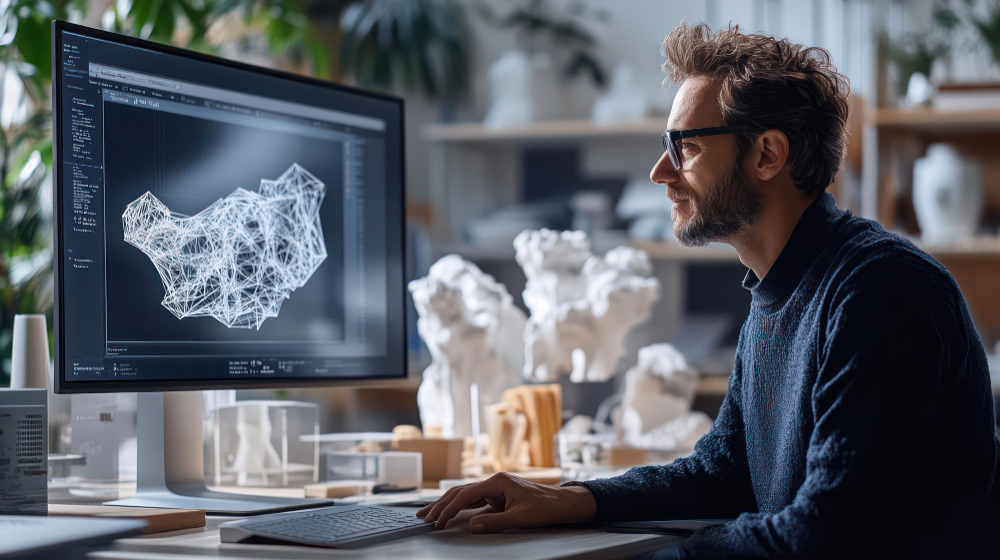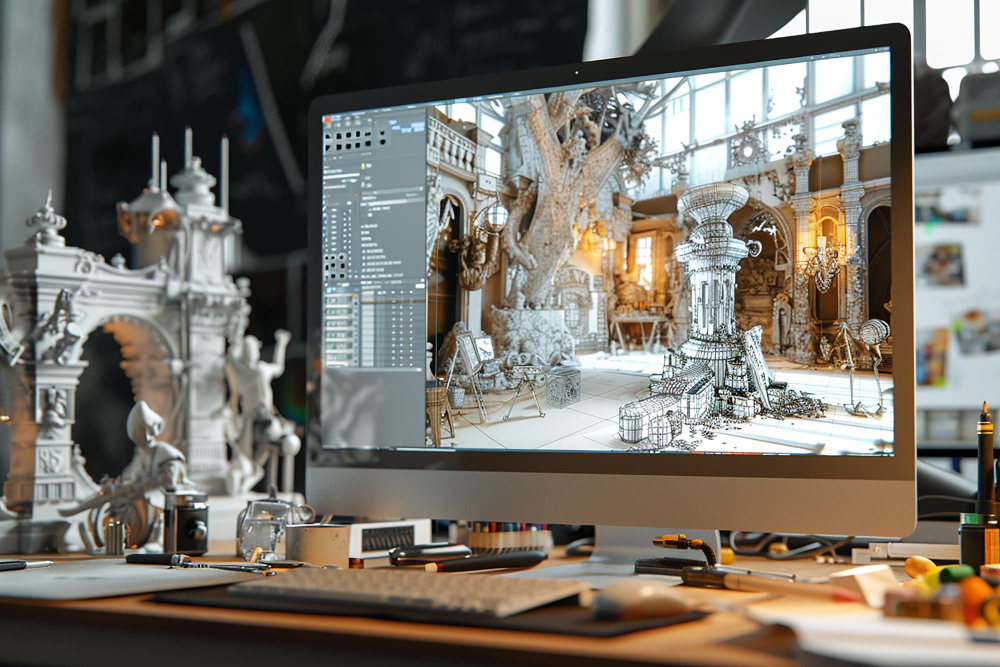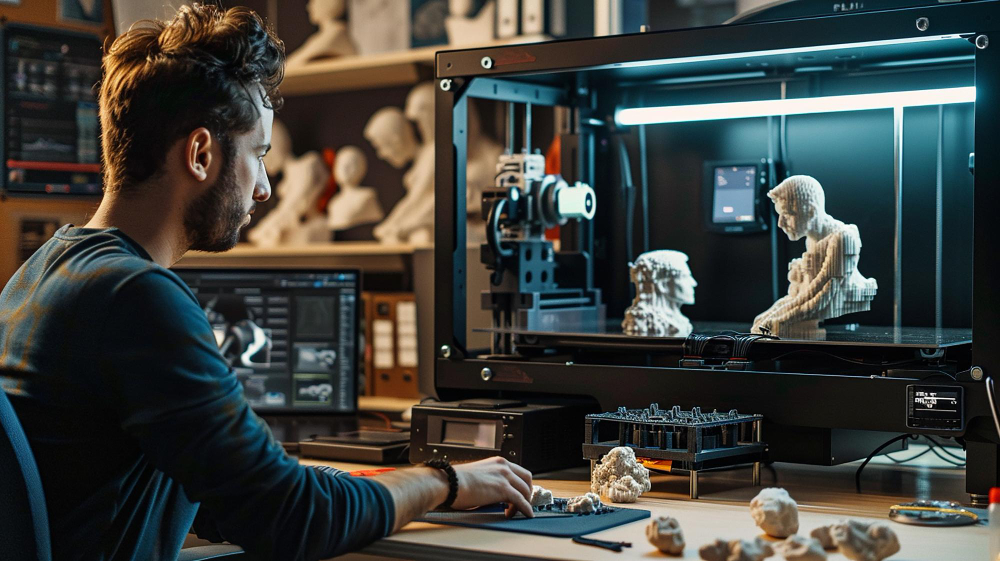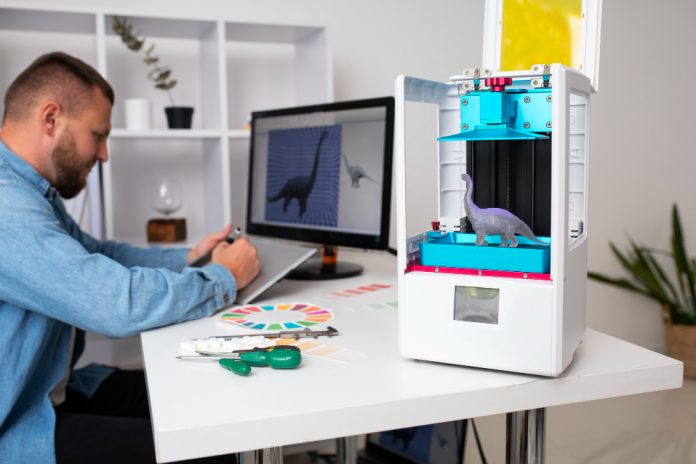The Future of 3D Modeling: Updates on AI & Technology by Outreinfo
Over the years, there has been great development in artificial intelligence in ways such as natural language processing and even image recognition. AI is having an impact on various industries such as 3D modeling however this is one of the most interesting and probably most daunting fields in which AI has an impact.
The potential to generate high-quality three-dimensional images or models using AI is likely to change the face of such industries as gaming, movie production, architecture, and virtual reality. In a trial to incorporate artificial intelligence in 3D modeling, this article highlights current development, barriers, and the possible evolution of AI-generated 3D models.
The Complexity of 3D Modeling

It is not only one of the most desirable tasks but the creation of a detailed and exact 3D model is difficult and demands knowledge of geometry, topology, material characteristics, and specific design features. In the distinction that the two dimensions only constitute images, the construction of the three-dimensional image models which consist of variables is noticed, and though simple, it poses a problem for generating 3D scenes. This complexity explains why creating 3D models, an endeavor often automated by AI is still off the charts.
Geometry and Topology
Three-dimensional geometry, as well as the topology of surfaces, are the basic elements of 3D modeling. Geometry concerns the form and dimension of the object while topology concerns the subdivision of the object’s surface into polygons. Geometry and topology define how the models will represent and function within a specific scenario in the real world. So, these concepts need to be comprehended or taught to AI so that it is not limited to only how good the generated models look but also how sturdy they are.
Material Properties
The realism of the 3D model is lied by the material properties including the surface texture the color and the surface reflectivity. There has to be the ability to make sure these properties are effectively reimagined by AI in order to make the models appear and feel realistic, especially when using Luma AI. This calls for advanced algorithms and knowledge about the material and other light-scattering factors to effectively make 3D representations.
Design Considerations
Design considerations are the beautiful and functional aspects of the model design. For instance, in making a 3D model of a chair, the model shouldn’t just be a chair but rather have some functional features suggesting it can actually be used as a chair. This requires one to consider the ergonomics of the object, its aesthetics, and functional aspects in order to effectively generate 3D assets. AI has to factor in these factors if models that not only look accurate but also function correctly are to be created with generative AI for 3D.
Current State of AI in 3D Modeling

3D modeling has already gone quite some way into the implementation of AI, especially that of creating basic structures, adding textures, and even modeling objects in 3D render form. Nevertheless, there is still a long journey towards achieving quality that can compete with the best in the industry. Most of the 3D models developed today with the use of AI are useless since they are of low quality and cannot be used in sophisticated places like video games, films, or architectural visualization.
Existing AI Tools: Choose the Best AI 3D Modeling Tools
Many AI software solutions can currently be used for 3D modeling. Looking for AI Modeling this tool makes use of several alternatives like text-to-3D, image-to-3D, and video-to-3D for the generating of 3D images. Some of the prominent ones are:
- Masterpiece X: Known for its ease of use, this 3D software allows users to create assets with mesh, textures, and animations efficiently.
- Rokoko Vision: Best for real-time full-body motion capture, this tool is popular among beginner creators and hobbyists.
- Spline: A web-based 3D AI art generator that excels in collaboration and team projects.
- Sloyd: Known for customization, this tool is ideal for creating 3D assets such as props, weapons, collectibles, and architectural elements.
- 3DFY AI: Best for gaming and architecture, this tool aims to eliminate the need for human labor in developing 3D content through automation.
Applications of AI in 3D Modeling
There are various fields where AI-automated 3D modeling can be applied, including VR, AR, and animation, using advanced 3D software. These models are also finding specific applications for advertisement, design, and even virtual reality, where generating realistic 3D models quickly is beneficial.
Challenges in AI-Generated 3D Modeling

Even though it has made this progress, several challenges need to be solved before AI is able to generate quality 3D models consistently.
Lack of Specificity in Textual Prompts
One of the main reasons is that the prompts given in text form are usually too general. Since it is often the case that such textual prompt describes few of the details present in the final 3D model, they tend to be inadequate most times. For example, the prompt “a red sports car” fails to elaborate on specific features such as the car’s make, model, size, and other complex designs. This failure by the AI increases the difficulty in creating 3D models that are accurate and contain quality detail.
Multimodal Understanding and Context
The generation of 3D objects based on text prompts implies that the AI models are required to understand images in the context of language as well as that of relative sites, object relations as well as background information. This multimodal understanding is important in the production of models and objects that are correct and that make sense psychologically. This is so because in order to model a 3D chair placed within a living room setting requires to work with the dimensions of the chair in relation to other objects in the Room.
Representation and Encoding
Another crucial barrier is to convert the textual prompts into a structured 3D translation. Here, we will have to transform the textual description in a way that will allow building a 3D model. The representation and encoding process is quite tasking, and sophisticated algorithms need to be used to ensure that the generated 3D model represents what it is meant to do accurately.
Limited Training Data
In order for AI models to synthesize 3D models from textual prompts, plenty of different, easily understood, and correctly annotated training sets are obligatory for text to 3D applications. This is not so currently as there are no available datasets of this kind making it hard to train AI models in the right way. Inadequate amounts of training data can lead to models that have limited applicability and poor 3D model generation performance across various conditions.
Future Prospects of AI in 3D Modeling

Even with these challenges, the outlook for AI in 3D modeling seems promising. Experts predict that in a few year’s time, they should be able to produce high-quality 3D models using AI. In the near term, the improvement in AI will still be evident in the creation of primary 3D models that are produced with little or no human automation.
In the next 3-5 years, AI is expected to be able to create quality and detailed 3D models for which other applications can be built on Nant virtual reality (VR), augmented reality (AR), and complex animations.
Long-Term Prospects
Over a long period of time, 3D models created by computers will likely even outperform those produced by humans in this area. Improvement in the precision and accuracy of AI-based algorithms is taking place, and with the growth of AI, we will likely experience a broadening of the scope of the creation of detailed textures, complex shapes, and real-life models. The rise in the availability of 3D models produced by the use of artificial intelligence can completely change the industry of creativity in many ways.
Democratizing 3D Modeling
The process of creating 3D models is becoming less of a preserve for a particular group of people thanks to the advent of AI 3D model generators. These tools enable everyone to design elaborate three-dimensional models with little skill. This massification of 3D modeling helps open the doors to new types of concurrency and joint creation since more people can take part in the creation of content.
Integration with Existing Workflows
In order to use the maximum potential of the created models, it is the responsibility of the designers and artists to embed generative AI in their everyday practices. This implies employing AI to perform mundane tasks thereafter e.g. building up some of the models, texturing models, or employing several designs on the same model. AI-assisted workflows will help to enhance client satisfaction by increasing design quality since the repetitive work will be handled by AI so the designers will dedicate themselves to complex designs.
Conclusion
AI implementation in 3D modeling has just commenced, but the achievements of generative AI are already impressive. Of course, there are obstacles that need to be solved, but the prospects of using 3D models generated by AI are boundless.
It is reasonable to predict that as AI technology also progresses, advanced 3D modeling will become more widespread and will be utilized in multiple fields. The advancement of AI in 3D modeling seems admirable, and there is every chance that it will change how 3D content is made and consumed. Blog by Outreinfo

